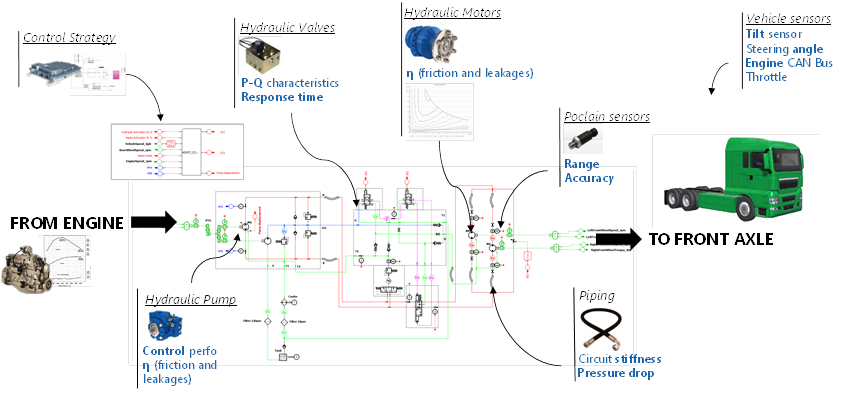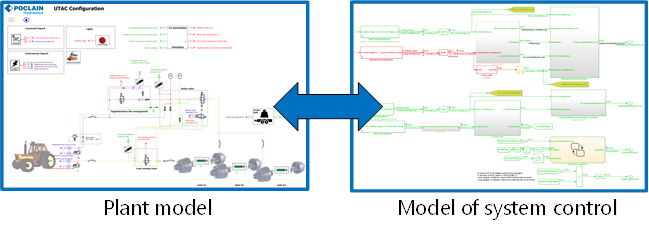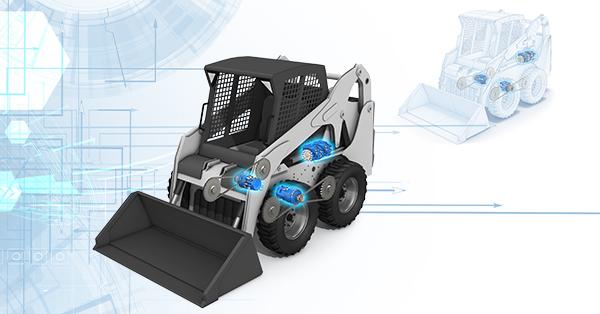SYSTEM SIMULATION FROM COMPONENT TO MACHINE
Component, system or full machine simulation allows for efficient trouble shooting and system optimization with fewer resources involved than physical testing. This enables research and development to zero-in efficiently on root causes and to concentrate development on tested solutions.
Poclain employs software programs to simulate full transmission systems for their customer’s machines. The software enables engineers to examine the hydraulic system using multiple variables at the component level, the system level, and at the complete machine level. The software helps engineers rapidly consider various design concepts, and optimize products prior to production resulting in an accelerated design process, improved sustainability, increased system innovation, and significantly reduced need for testing and physical prototypes.

The software employed by Poclain Hydraulics allows for multiple layers of simulation from detailed and explicit representation of each component to hydraulic systems and full vehicles. Simultaneous digital testing of controls alongside the hydraulic system allows for better evaluation and determination of the control requirements and performance in early design stages. This helps reduce the time needed to size and specify components, optimize system design, as well as streamline control integration and machine testing.

Different parameters are needed for the performance assessment of a system within a specific machine depending on the type of analysis being done. They can range from thermal engine characteristics, machine data such as weight and height, hose configuration, tyre data, ground adherence, etc. The simulation software allows evaluation of the specific machine’s hydraulic system performance characteristics, including tractive effort, maximum slope, maximum speeds in work or road mode, and power losses. It enables engineers to test the machine’s current system behavior against a new system.
“[The software] enables us to imagine new solutions because of a better understanding of the system. In particular, the simulation enables us to focus on variables which cannot even be measured, and test new concepts without the need of an expensive prototype. For vehicle simulation, even if we have a good knowledge of each component, the interaction between them is not always easy to evaluate.” Gilles Lemaire, Scientific Support Manager Poclain Hydraulics

Digital twin and simulation technologies are just some of the growing range of services that Poclain Hydraulics offers their customers to better understand their machines, optimize their systems and find innovative answers to their needs. This innovative technology continues to open new doors to more efficient development processes for OEMS.
For more information, or to discuss Poclain Hydraulics digital twin/system simulation technologies contact:
Yohann Brunel, Simulation & Control Manager
For more information on Poclain Hydraulics engineering services contact:

